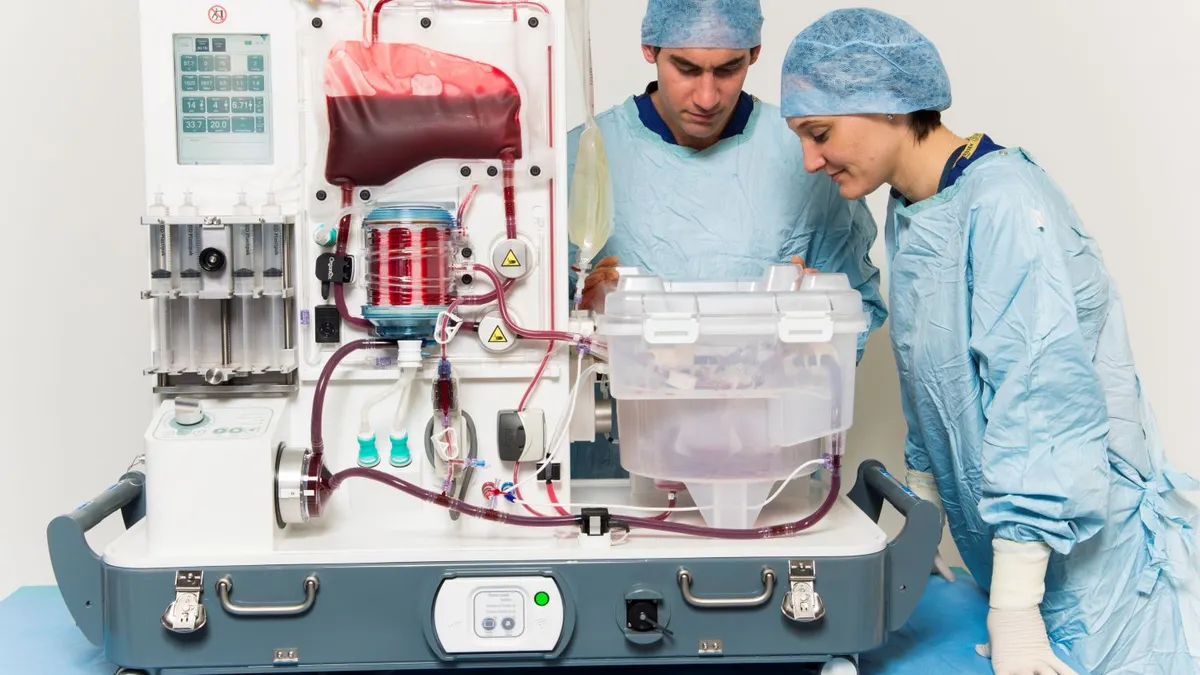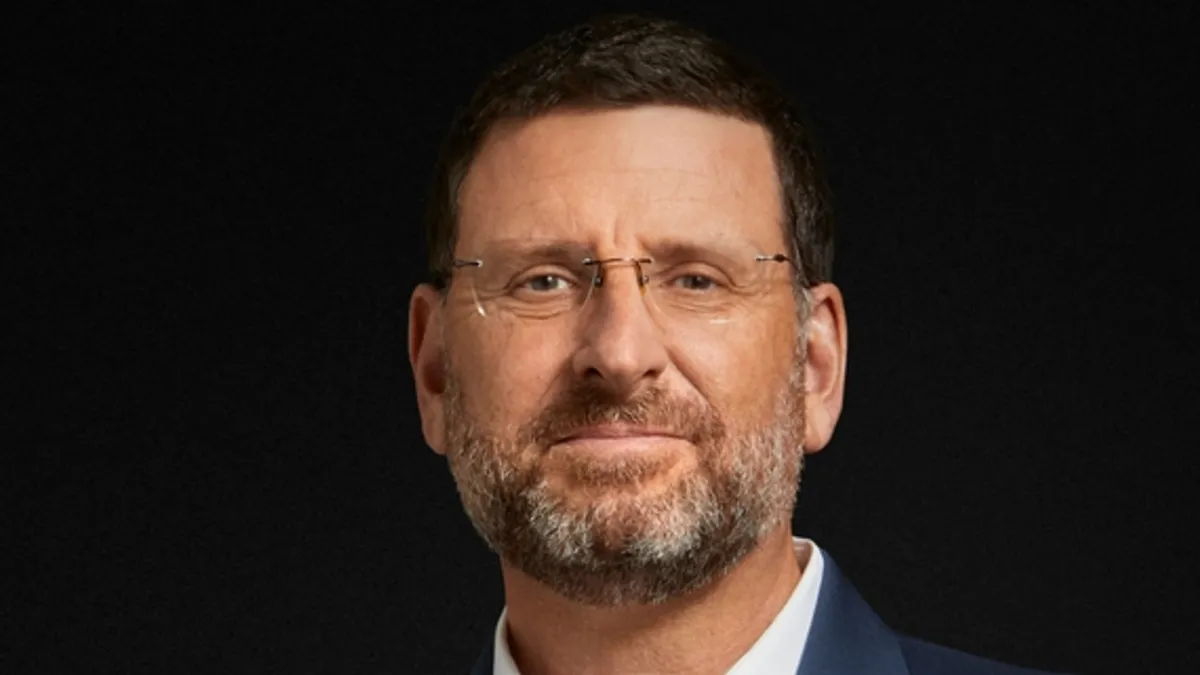After roughly three years of navigating the unpredictable and complex COVID-19 pandemic environment, medical device companies returned to some sense of normalcy in 2023.
Challenges such as low procedure volumes, hospital staffing shortages and an unreliable supply chain either improved or companies implemented strategies to navigate them. Additionally, macroeconomic pressures eased, allowing some medical technology companies to return to more normal growth margins.
“I feel like 2023 has actually been the first year post-COVID which has really been a strong growth year for medtech on the top line,” said Shagun Singh, an RBC Capital Markets analyst. However, Singh added that medtech stocks were “a bit of a roller coaster ride” last year due to concerns around topics like inpatient hospital volumes and the popularity of weight loss drugs.
Industry executives reported improving business trends and a solid operating environment in the third quarter of 2023 on their latest earnings calls. Medtronic, which typically is the last large medtech company to report, even hinted the final months of the year had similar stability.
Singh said macroeconomic factors like potential interest rate cuts and inflation still pose lingering questions that will impact industry trends this year.
With plenty going on in the medtech industry, Wall Street analysts and healthcare experts helped MedTech Dive break down key financial trends, regulations and product categories to watch in 2024:
1. M&A pace to speed up
Medtech dealmaking slowed in the past two years after a flurry of activity in 2021. BTIG analyst Marie Thibault said M&A is going to “speed up” this year after the recent slowdown, as medtech companies debut new products or gain regulatory clearances and macroeconomic conditions improve.
“Large companies might have more of an appetite for M&A because interest rate hikes are possibly stopping and starting to reverse [in 2024],” Thibault said. “They can make the math work a little easier on return on invested capital, right? If your comparison is no longer such a high interest rate and what you could get on the cash. And you can look around and look for innovative new products or innovative companies that are still in a little bit of a rut valuation-wise.”
Thibault said new products coming to market in pulsed field ablation and mitral and tricuspid repair and replacement could attract interest from larger companies, as well as commercial monopolies like mechanical circulatory support and intravascular lithotripsy, a treatment for kidney stones.
Boston Scientific kicked off 2024 M&A activity on Monday with its $3.7 billion acquisition of Axonics. Several deals were also announced in the final months of 2023, possibly signaling companies are more willing to spend this year: Johnson & Johnson said it will spend $400 million for Laminar to increase its competitive edge in the growing left atrial appendage closure market; Zimvie plans to sell its spine unit for $375 million; and Integra plans to acquire J&J’s Acclarent subsidiary for $275 million.
“It’s pretty hard to get any worse, from an IPO standpoint, from zero, right?”

Richard Newitter
Truist Securities analyst
Michael Weinstein, senior analyst at Moody’s Investors Service, said companies prioritized R&D spending last year as M&A slowed and firms executed more tuck-in acquisitions, trends that may continue.
“I think we'll see continued focus on R&D spend and innovation internally. But if the right transaction were to come along — I think even this year we could have seen some transactions but didn't,” Weinstein said. “It depends on what becomes available for sale.”
Truist Securities analyst Richard Newitter said there may also be an appetite for companies to explore IPOs because of the medtech investment community’s interest in growth opportunities after a two-year dearth of new public companies.
“It’s pretty hard to get any worse, from an IPO standpoint, from zero, right?” Newitter said. “There's an appetite for new growth areas and new issuance. Obviously, rates going lower and the rebound, or at least the start of a rebound in [small- to mid-cap] valuations [may] make it a little bit more amenable for exit and small caps exploring the IPO market in 2024.”
2. Tougher financial comparisons
While medtech companies reported more stable financials and growth, the positive environment could have set up a tougher 2024 in terms of year-over-year comparisons.
“I think it returns to the way this industry looked prior to the pandemic: Innovation matters, growth matters — top line is a major driver of this industry and this market,” said Mayuri Shah, a partner with Bain & Company.
Some companies are likely to preview how the year will play out in comments at the J.P. Morgan Healthcare Conference this week and during the fourth-quarter earnings season, which begins at the end of the month.
One variable that could make this year a bit more difficult for companies is procedure backlogs drying up. Thibault said that companies dependent on more urgent procedures, such as cardiac surgery, have mostly worked through backlogs.
Meanwhile, Newitter said that orthopedic companies may still benefit from backlogs for hip and knee replacements in the U.S., but the boost won’t be “anything close to what the bolus was, if you will, in the first half of ‘23.”
“I think it returns to the way this industry looked prior to the pandemic: Innovation matters, growth matters — top line is a major driver of this industry and this market.”

Mayuri Shah
Bain & Compay partner
3. More LDT controversy?
One of the more contentious regulations over the past few years has been the Food and Drug Administration’s proposed rule to increase oversight of lab-developed tests. The rule received thousands of responses during the public comment period, with industry groups and hospitals claiming it would limit patients’ access to essential tests.
The American Clinical Laboratory Association, which represents companies including Labcorp and Quest Diagnostics, asked the agency to withdraw the proposed rule. Regardless, the Biden administration has scheduled the release of the final rule for April.
In an email to MedTech Dive, TD Cowen analyst Eric Assaraf questioned whether the Department of Health and Human Services “will actually release [the final rule] given the pushback, and if they do, I fully expect it to be challenged in court.”
Assaraf said Congress will need to codify the FDA’s regulatory authority over LDTs into law, whether the agency finalizes the rule or not. However, the opportunities to do that this year may be limited.
“The next legislative catalyst to potentially attach LDT reform could be the next spending bill in January/February, but I think it’s a low likelihood that it will be included,” Assaraf wrote. “There will be less opportunities to get a bill done as we get closer to the elections, so it might have to wait until the lame duck [session] or 2025.”
4. PFA to take off
The year ended with several big announcements in the pulsed field ablation (PFA) space. Medtronic received the first FDA approval for a PFA device, and Boston Scientific said that it expects the agency to approve its Farapulse system in the first quarter of 2024, ahead of its previous projection for the second half of the year.
Multiple analysts with whom MedTech Dive spoke highlighted PFA as a product category to watch, and the announcements from Medtronic and Boston Scientific may have teed up what will be a big year.
“[Adoption is] going to come very quickly,” Thibault said. “Doctors are very excited about [PFA], they've been hearing their peers in Europe have access to some of it, and they're eager to try it. Even if we haven't necessarily seen efficacy be higher, we are seeing faster throughputs on the procedures, it's a safer technology. I do think you're going to see that shift happen quickly.”
With multiple competitors likely to hit the U.S. market this year, including Medtronic’s PulseSelect system, a key question is who will ultimately lead the space. Thibault said Farapulse “might have the upper hand eventually” despite slightly trailing Medtronic’s PulseSelect rollout, which the company said will begin in early 2024.
Singh said that Farapulse could be one of the biggest product launches of the year, calling PFA a brand-new technology in a “massive $8 billion” electrophysiology market.
5. The end of GLP-1 panic
The skyrocketing interest in weight loss drugs was one of last year’s biggest healthcare developments. In the medtech space, the interest in GLP-1s panicked investors about the impact on companies and, ultimately, led to a stock sell-off.
Concerns about a potential drop in demand for device treatments increased after some trial results showed that the medications were associated with improved heart health and even helped some patients reduce their insulin use or stop it altogether. Diabetes technology companies like Insulet and Tandem Diabetes Care saw their stocks decrease, while surgical robotics maker Intuitive Surgical faced questions from analysts about a slowdown in bariatric surgery volumes associated with the drugs.
“I do not think the same level of concern and fear-mongering is going to happen again in 2024. I think that is behind us.”

Marie Thibault
BTIG analyst
Multiple CEOs downplayed the risks to the space as questions came up during third-quarter earnings calls.
Analysts think fears about the impact of the drugs have peaked. However, interest and concern around the medications are not likely to disappear completely.
“I do not think the same level of concern and fear-mongering is going to happen again in 2024. I think that is behind us,” BTIG’s Thibault said. “I don't think the topic is dead.”
Truist’s Newitter said that companies are taking a more pragmatic view of the potential impact on the medical device industry. The medications may eventually harm certain procedure categories but not for quite some time, he added.
“It's going to be so far out in the future, it's not even an investable timeframe,” Newitter said. Given how under-penetrated medical technologies and therapies are in numerous disease states, weight loss drugs are “unlikely to even put a dent into the growth opportunity at that point in time … to warrant the amount of market cap destruction, or anything close to the market cap destruction, that occurred throughout the fall of ‘23,” he said.



















